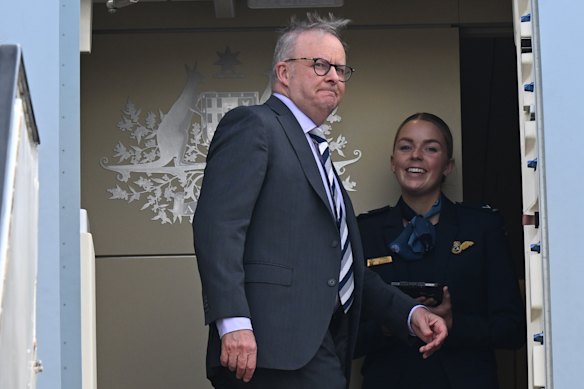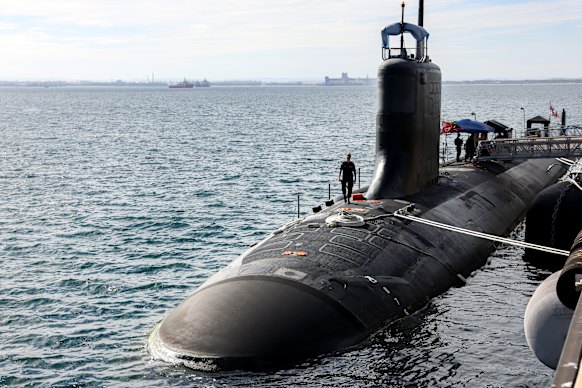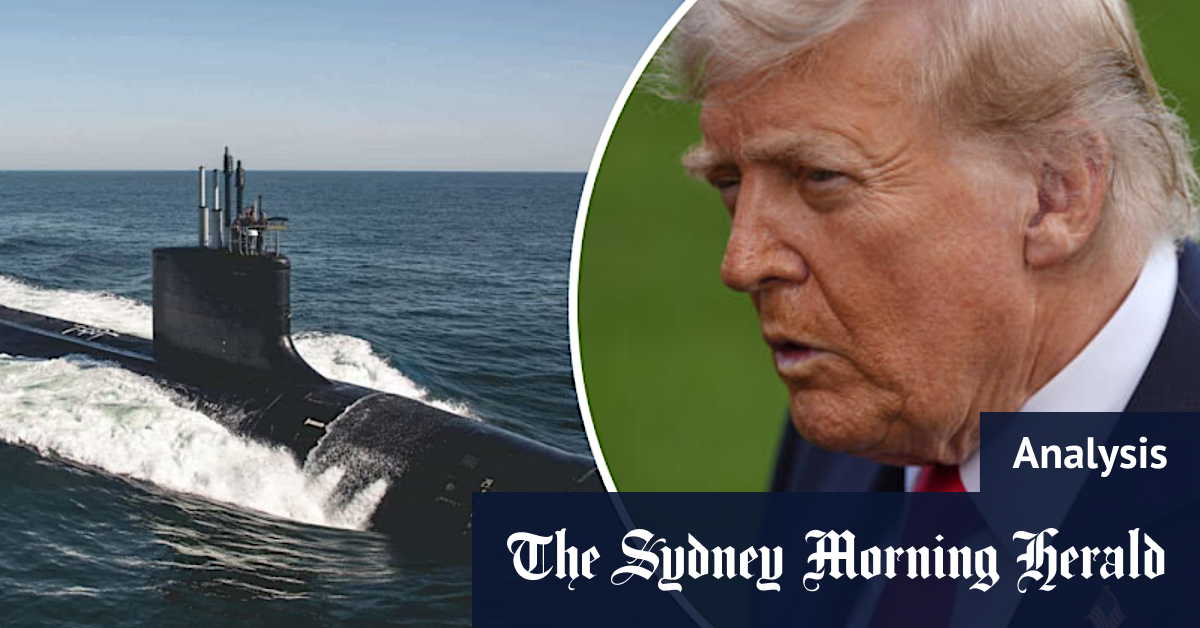Washington: Above anything else, Prime Minister Anthony Albanese will want to use his White House visit to extract a commitment from US President Donald Trump to honour the AUKUS defence pact and the plan for Australia to buy at least three nuclear-powered submarines from the US before making our own.
It seems that’s where things are heading. Despite the Pentagon undertaking a thorough review of the deal, all the messaging suggests the US will broadly stick with it, perhaps with some alterations to put an “America First” stamp on a policy inked under former US president Joe Biden.

Prime Minister Anthony Albanese leaves for Washington to meet with Donald Trump.Credit: AAP
And why wouldn’t they? AUKUS is a great deal for the US and its lagging submarine industrial base, which is producing far fewer boats than required. To that end, Australia has so far handed over two cheques, each for about $800 million, to support American shipbuilding. It will “shortly” produce the next scheduled payment of $US1 billion ($1.54 billion), and is due to pay a further $US1 billion at a later date.
At the end of the day, the agreement does not bind the US to give Australia the submarines it helped build. In the 2030s, the president of the day can veto the sale if it’s determined that the US needs them for its own security interests.
This is openly acknowledged in Washington by those who understand the agreement. Bryan Clark, senior fellow and director of the Centre for Defence Concepts and Technology at the right-wing Hudson Institute think tank, who is close to the Trump administration, told this masthead in August: “There are plenty of off-ramps for the US down the road.”
The US is currently producing about 1.2 Virginia-class submarines a year – a rate that needs to climb to 2.33 to fulfil AUKUS obligations to Australia. Recent budgets have given Congress appropriate extra funds for the Navy to start turning the ship around, so to speak, but it is a slow process with a big gap to close.

Virginia-class fast attack submarine USS Minnesota docked at HMAS Stirling in Rockingham, WA, in February.Credit: Getty Images
Then there is the sleeper problem for AUKUS – the Columbia-class submarine. This is the US’s next-generation ballistic missile submarine to replace the Ohio class, with 12 due to be built. Since 2013, the Navy has said the Columbia program is its top priority. Both vessels are built in the same two shipyards.
In a report to Congress late last month, the Congressional Research Service’s long-serving shipbuilding expert, Ronald O’Rourke, again brought this to the attention of members. He wrote: “In a situation of industrial base constraints, the Columbia-class program will have first call on resources to minimise the chances of schedule delays in building Columbia-class boats.”

